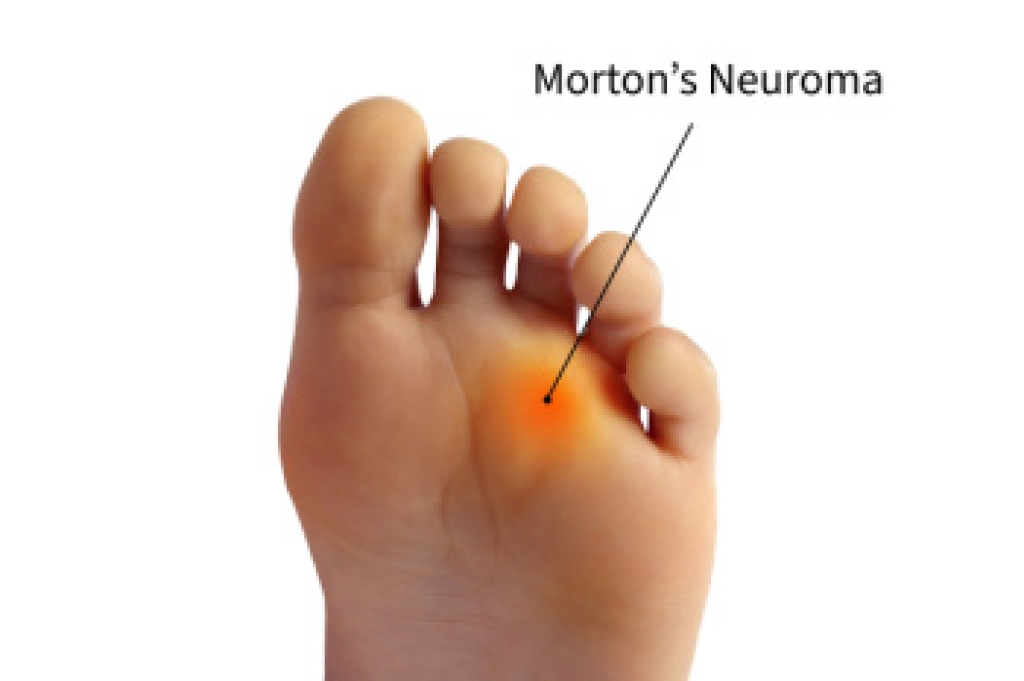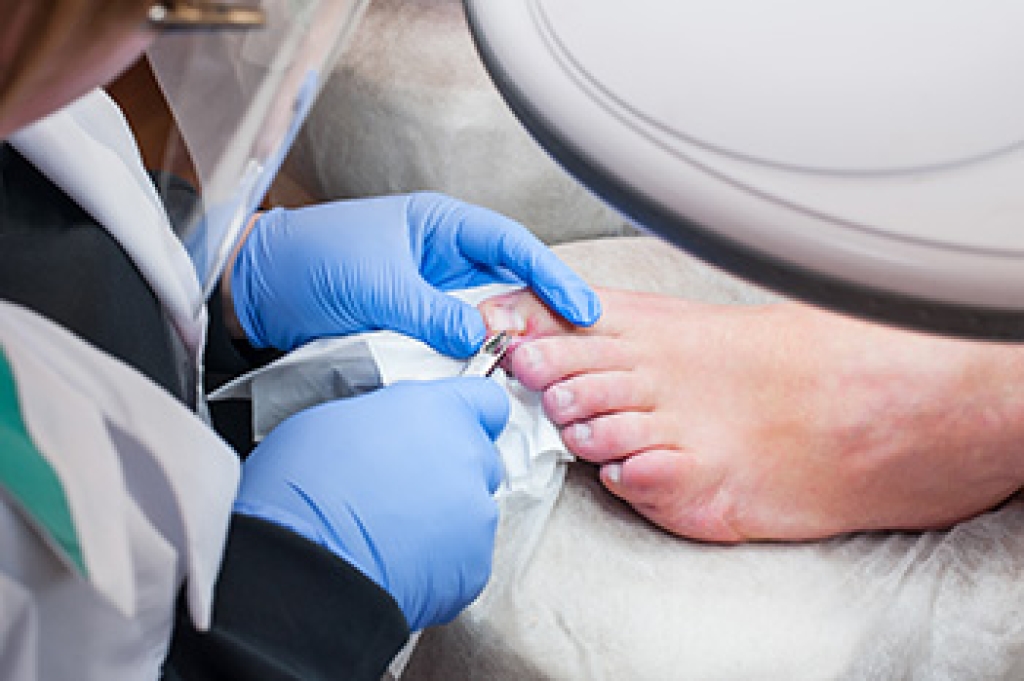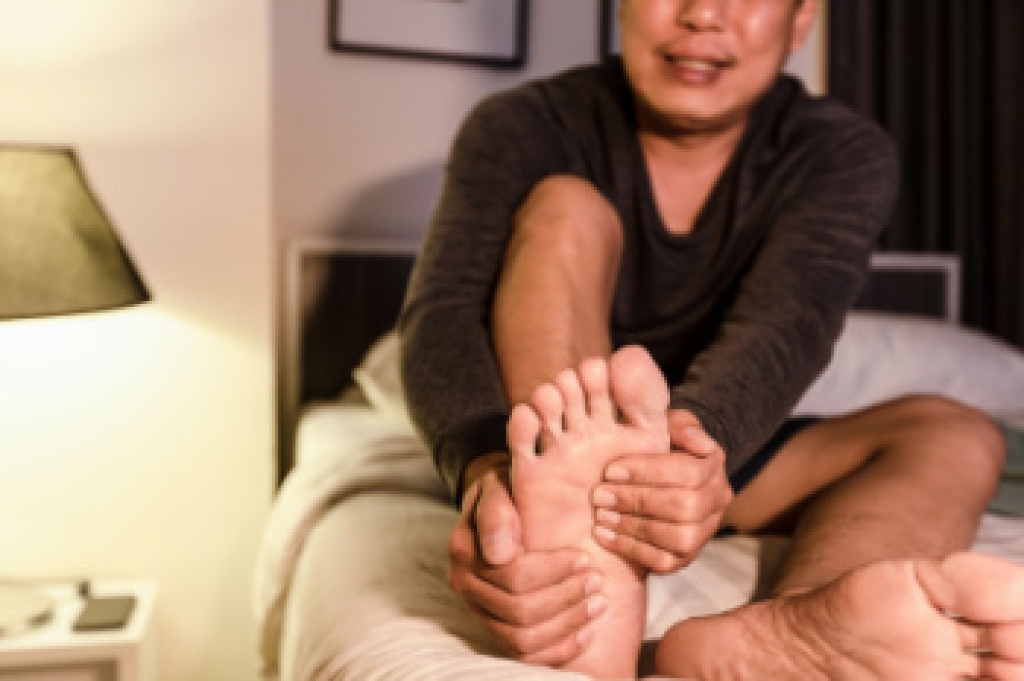
Morton's neuroma is a painful condition that affects the ball of the foot, most commonly between the third and fourth toes. It is caused by thickening of the tissue surrounding a nerve that leads to the toes, often due to repetitive stress, wearing tight footwear or high heels. Foot deformities like flat feet or bunions can also be factors. Symptoms may include sharp, burning pain, or the sensation of having a pebble inside the shoe. The pain often worsens with activity or pressure and may subside when the shoes are removed. A podiatrist can diagnose Morton's neuroma through a physical exam, symptom review, and imaging such as ultrasound or an MRI scan. Treatment options include footwear modifications, custom orthotics, anti-inflammatory medications, or, in severe cases, surgical removal of the affected nerve. Early diagnosis can prevent the condition from worsening. If you are experiencing persistent forefoot pain or numbness, it is suggested that you schedule an appointment with a podiatrist for an expert evaluation and relief.
Morton’s neuroma is a very uncomfortable condition to live with. If you think you have Morton’s neuroma, contact one of our podiatrists of Lexington Foot and Ankle Center, PSC. Our doctors will attend to all of your foot care needs and answer any of your related questions.
Morton’s Neuroma
Morton's neuroma is a painful foot condition that commonly affects the areas between the second and third or third and fourth toe, although other areas of the foot are also susceptible. Morton’s neuroma is caused by an inflamed nerve in the foot that is being squeezed and aggravated by surrounding bones.
What Increases the Chances of Having Morton’s Neuroma?
- Ill-fitting high heels or shoes that add pressure to the toe or foot
- Jogging, running or any sport that involves constant impact to the foot
- Flat feet, bunions, and any other foot deformities
Morton’s neuroma is a very treatable condition. Orthotics and shoe inserts can often be used to alleviate the pain on the forefront of the feet. In more severe cases, corticosteroids can also be prescribed. In order to figure out the best treatment for your neuroma, it’s recommended to seek the care of a podiatrist who can diagnose your condition and provide different treatment options.
If you have any questions, please feel free to contact our offices located in Harrodsburg, Frankfort, Georgetown, and Lexington, KY . We offer the newest diagnostic and treatment technologies for all your foot care needs.



